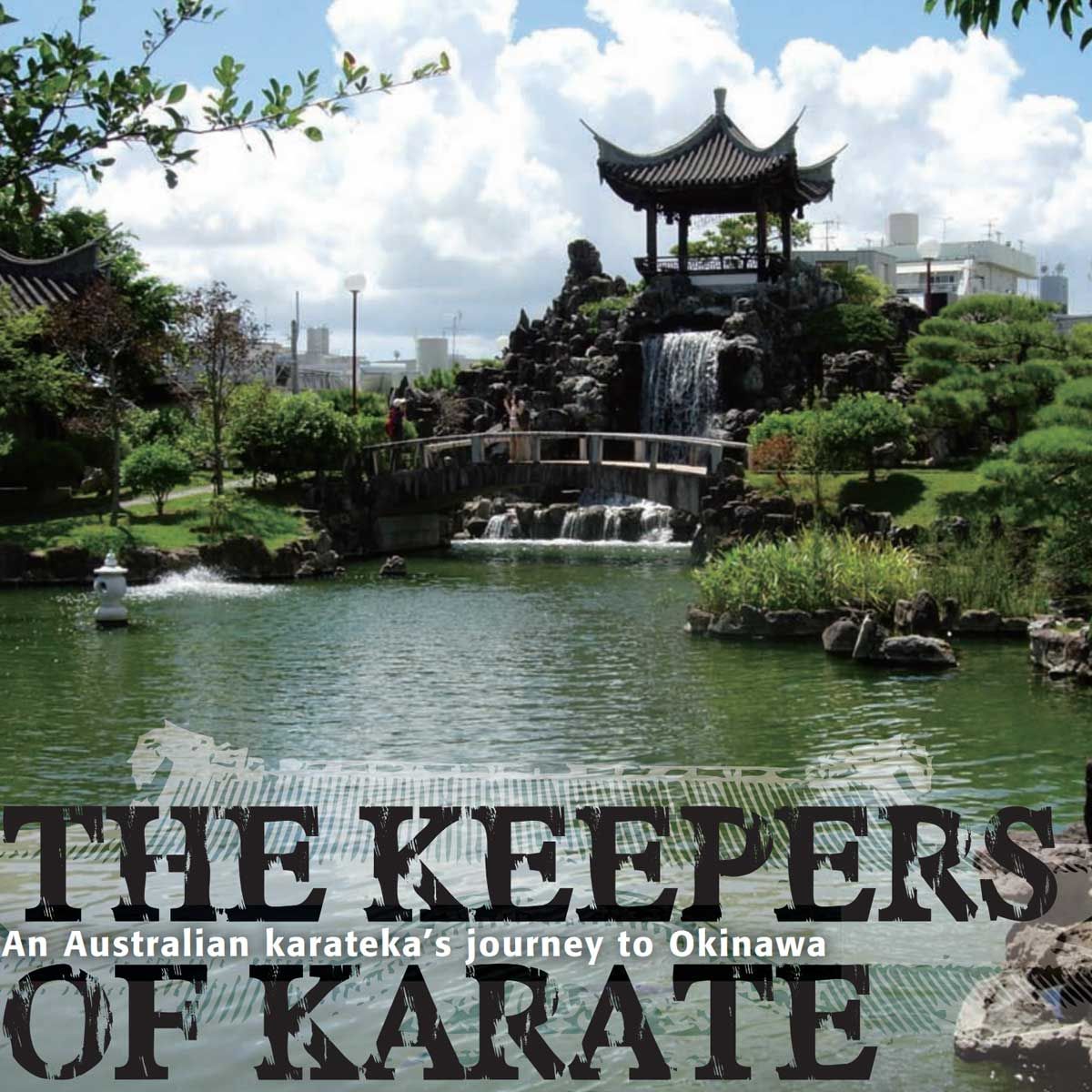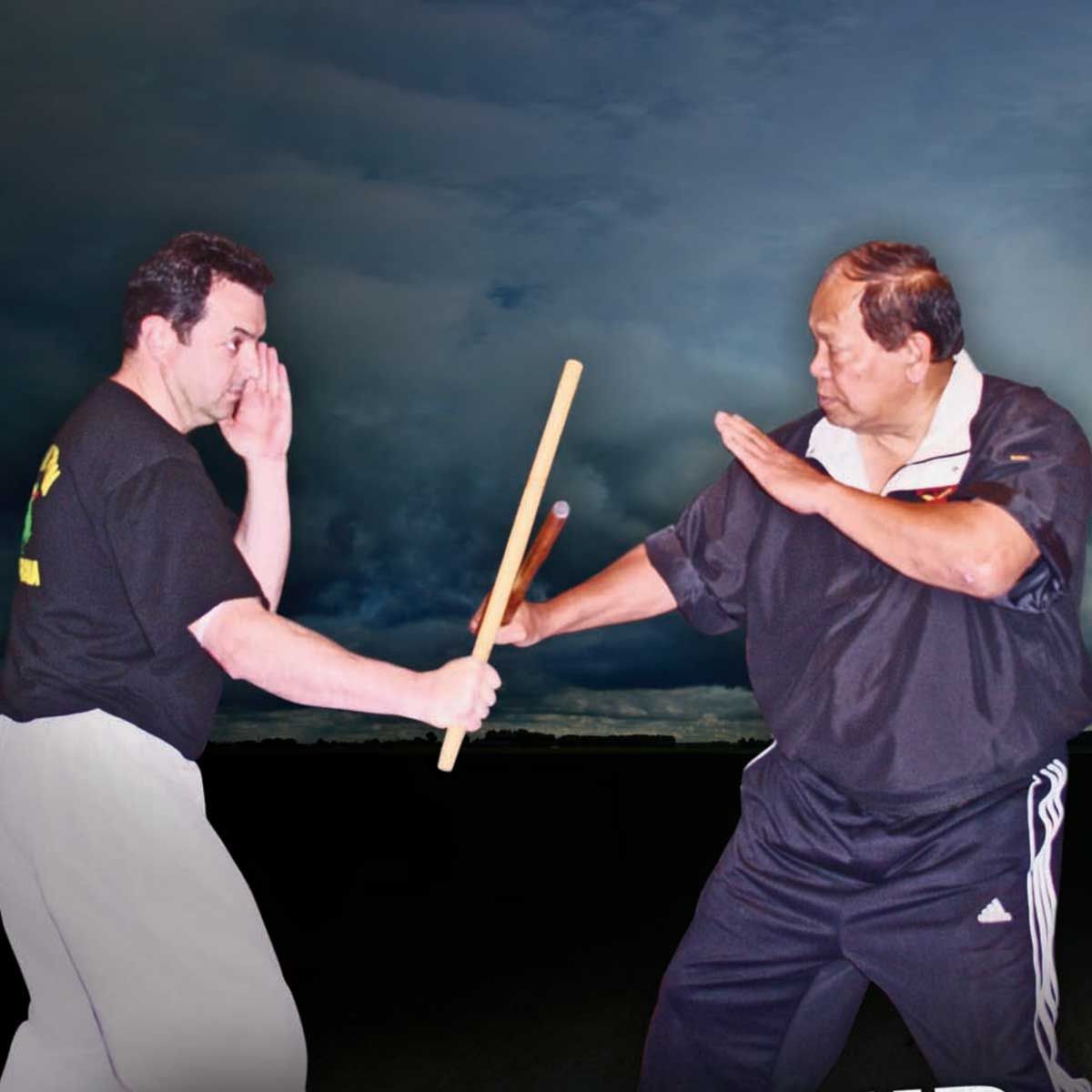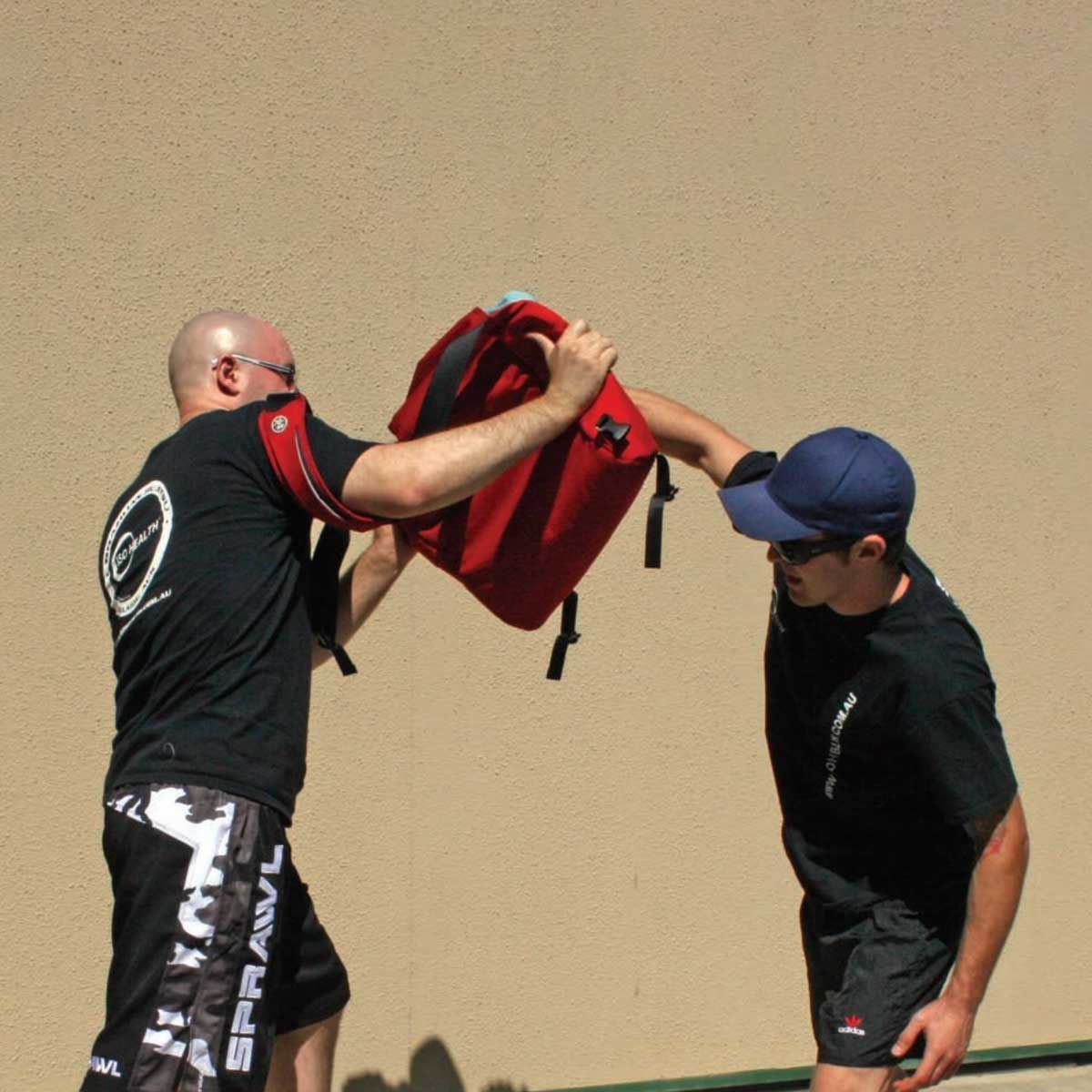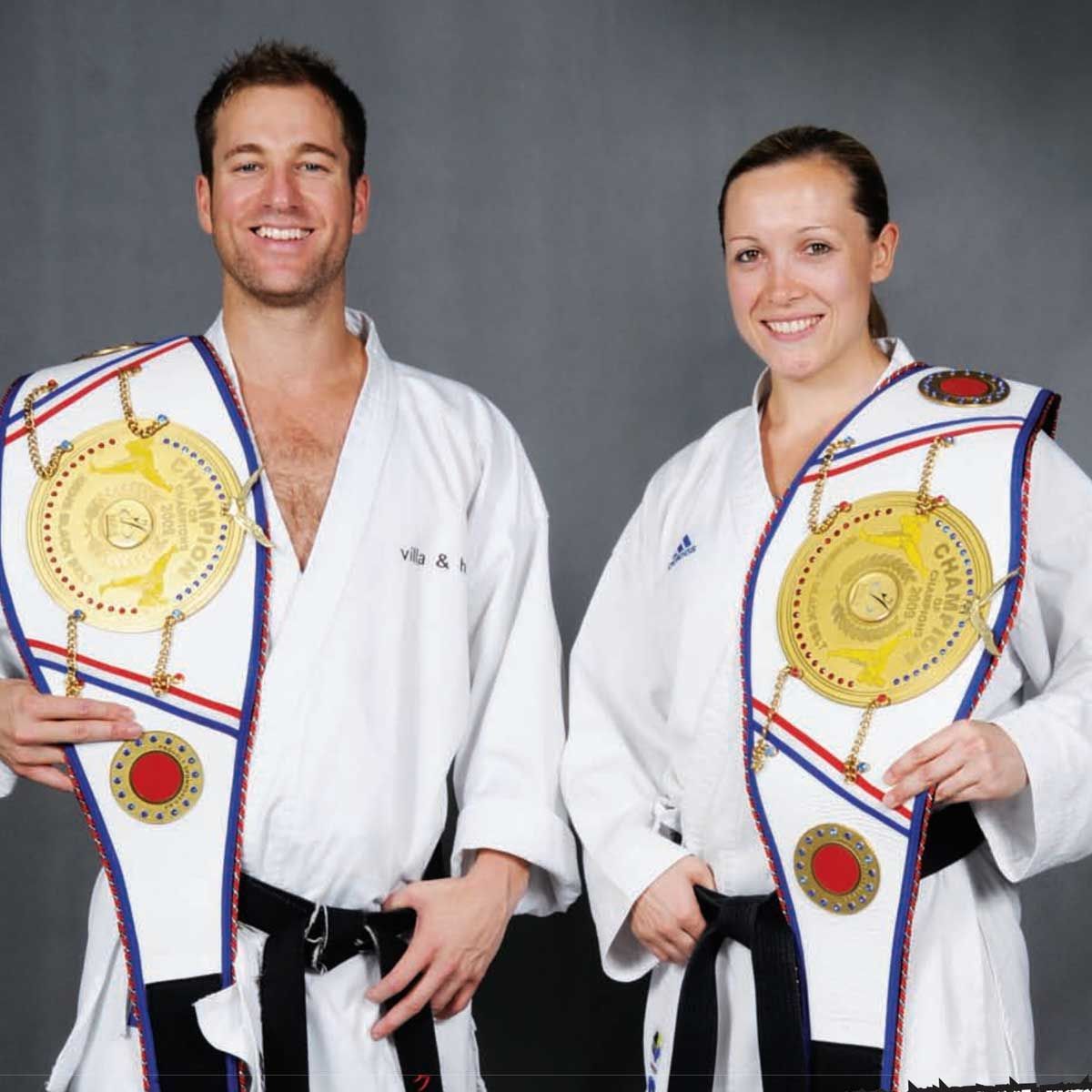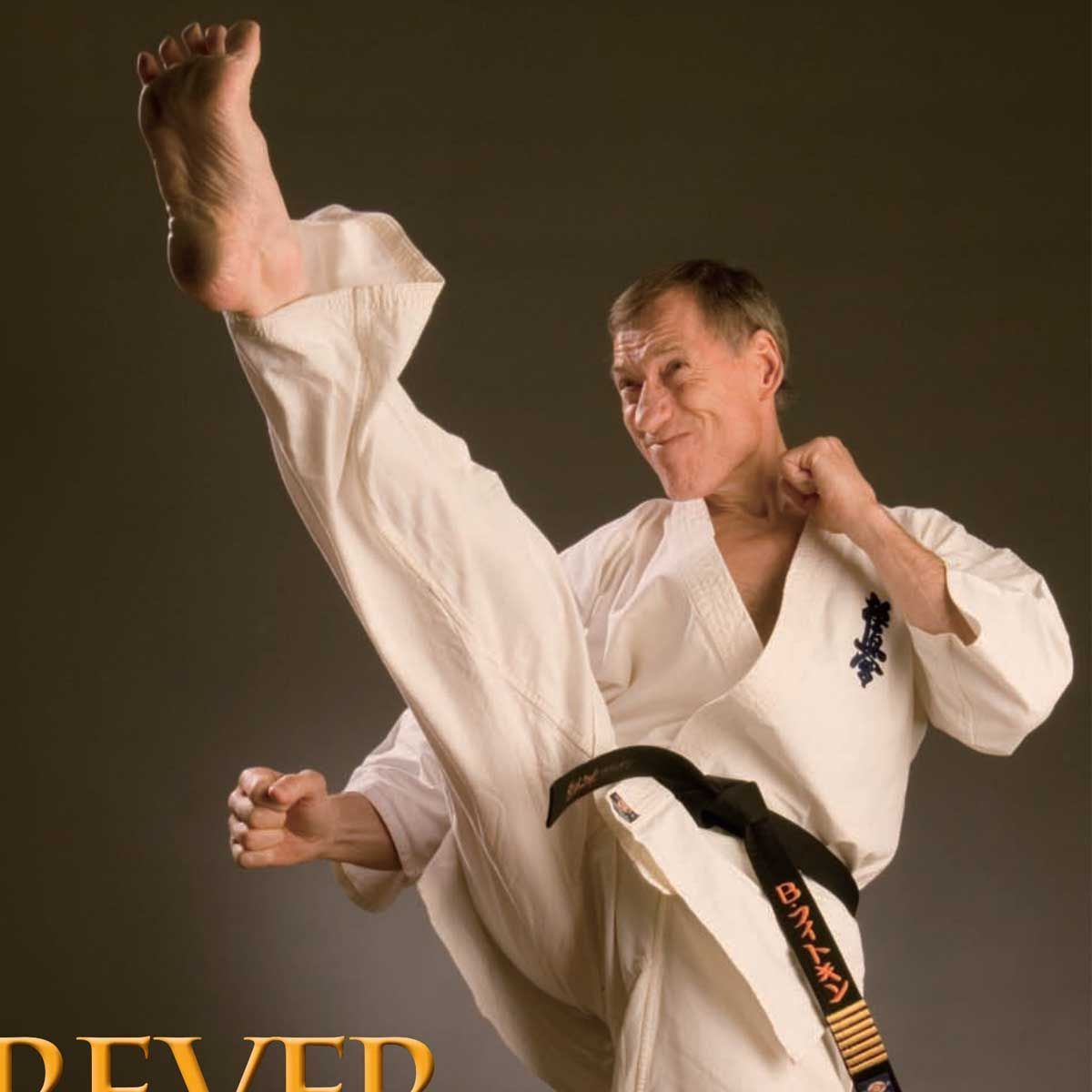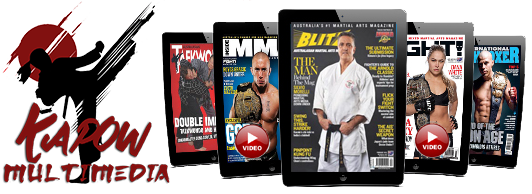PRESERVING KARATE’S LEGACY - Seiko Suzuki
Seiko Suzuki Sensei, 9th Dan, recently visited Australia for the first time to teach at the Australian hombu (headquarters) of his organisation, the Suzuki-Ha Shito-Ryu Nihon Karate-do Seiko-Kai. Shito-Ryu student Alan McNevin reports on the Japanese master’s time Down Under. STORY BY ALLAN MCNEVI
Australian students of Shito-ryu karate were treated to a visit by not only Suzuki sensei but several high-ranking branch chiefs who traveled with him: Senseis Tadao Aono, Naoyuki Ohgiya and Hidetomo Kanno, all 8th Dan, and Teruyuki Okada, 5th Dan, as well as some seniors from the Suzuki-Ha sohombu, Senseis Fujio Takano and Shoichi Yokoyama, both 5th Dan.
It is not often that an Australian dojo gets to host such a large number of senior instructors from Japan, and the students soaked up every moment. With over 55 years training in Shito-Ryu karate, Suzuki sensei has a wealth of knowledge and experience on which to draw. Born in 1936, Suzuki, like most senior karateka, moves with the ease of a man much younger. What strikes you first about him is his intense gaze; he could probably defeat many an opponent just by looking at them. Despite his serious demeanor, Suzuki Sensei is kind-hearted and feels that this must show in your practice, especially when teaching young people. Speaking through branch chief Naoyuki Ohgiya, Suzuki Sensei said, “We must teach our juniors well. They are the future of karate. If the karate teacher does not have a good heart, the juniors will imitate him or her and the true art of karate will be lost.” According to his Australian representative Colin Punyer, 6th Dan, “Suzuki Sensei is a very traditional Japanese: he is straight to the point. He is softly spoken, but will raise his voice to make a point.” Suzuki sensei runs a full-time dojo in Tokyo and spends all his spare time there.
Again, Colin Punyer provides an insight into the man: “Every time I travel to Japan and walk through the door of the dojo, Suzuki Sensei has been in the dojo. As soon as he sees me enter, his face lights up with a smile as he knows he has a willing student who is hungry to always learn more.” Seiko Suzuki started his Karate training in 1954 under legendary karateka Ryusho Sakagami, himself a senior student of Kenwa Mabuni. In 1957, Sakagami Sensei relocated his dojo from Tokyo to Yokohama and left Suzuki Sensei to run his Tokyo dojo. Suzuki was a loyal student and would visit the Sakagami Genbu-Kan dojo in Tsurumi, Yokohama to continue his training almost every week. There’s no doubt that it is during this period that Suzuki Sensei developed much of his philosophy on training. In describing how karate should be trained, he told his Australian students, “You should strive for perfection and never settle for near enough,” and, “You should train both wise and hard. When you try hard, your body feels good. When you train wise — analysing your technique — your mind feels good.” During this period, in order to ensure the students at the Seiko-Kan (as his dojo was then called) were learning correct Shito-ryu technique, Suzuki Sensei would insist that they travel with him to Sakagami Sensei’s dojo as often as possible. In 1963, during one of his frequent visits to the Yokohama dojo, Seiko Suzuki was introduced to Ryusho Sakagami’s friend and teacher, the famous Ryukyu kobudo master Taira Shinken. From that time on, he was dedicated to both the practice of Shito-ryu karate and Ryukyu kobudo. His dedication and determination were rewarded when in 1965 Sakagami Sensei presented Seiko Suzuki with his karate-do Shihan certifi cate. In 1968 he was awarded 7th Dan Kyoshi rank in kobudo by Shinken Taira Sensei. In these early years of intense training and teaching, Suzuki Sensei formed a lifelong friendship with another famous karateka, Fumio Demura. In fact, Suzuki was his sempai (senior) at the time.
Now, over 50 years later, both Demura Sensei’s GenkuKai and Suzuki Sensei’s SeikoKai groups share a common friendship and connection to Ryusho Sakagami. Seiko Suzuki continued to train and be loyal to his teacher and in 1980 he was awarded the 8th Dan Hanshi rank in Itosu-Ryu by Ryusho Sakagami. In 1992, he was also awarded his 8th Dan Hanshi certificate by the Japan Karate Rengo-Kai. After Sakagami Sensei's passing in 1993, Suzuki Sensei decided to form his own organisation, changing his dojo group name from Seiko-Kan to Suzuki-Ha ShitoRyu Nihon Karatedo Seiko-Kai. Although a highly ranked and experienced karateka, Suzuki Sensei still considers himself to be a student and says that you must never stop learning. He remains loyal to the tradition he has inherited, ensuring that he passes it on as best he can in the same way he was taught. His student Punyer says, “When something is wrong in kata he will continue to work on it numerous times. He does not teach tournament-style kata — changing kata is not an option to him. The kata he teaches are as taught to him by Sakagami Sensei. Kata is a gift: you accept it as a student, cherish it as a teacher, and then must pass it on to your students to keep it alive.” While only in Australia for a short time, Suzuki led three evening training sessions, each of which focused on the importance of basics and understanding kata.
The karate master was adamant that the meaning of kata is not in the literal translation of the techniques within the kata to fighting. For example, in kata, blocking techniques are performed moving forward, but “This is not so in reality,” he said (through Ohgiya Sensei), “in reality, you would move back or to the side.” He also spoke about how in kata, movements are often only done in one or two directions: “While kata is done in a pattern, in reality you should be able to move in any direction, thus we practise tenshin happo [moving in eight directions].” He also spoke about combinations of techniques found in kata. “In kata,” he said, “you do this, this, this [demonstrating technique], but in reality, it is only one technique.”
Thus, he emphasized the breaking down of kata into individual movements, which must be practised over and over until they are natural and instinctive. Each kata movement then becomes practical and can be applied in many ways, not just as it is presented in the kata. Although a kata itself does not represent a real fi ght, in Suzuki’s opinion this does not mean that the training of kata has no value — quite the opposite, in fact. Suzuki Sensei said, “When you practise kata, you should imagine your opponent,” and “You must have zanshin [awareness] and kime [focus]. Kata without these is just a collection of blocks and punches. You need to have the feeling of the technique — only then can you understand it. It is not just block, punch or kick.”
That said, kata practice aims at more than the perfection of fighting skills, and Suzuki is a believer in developing the person as a whole and not just the body. “You must practise karate with a good heart and not use karate to harm people,” he told us. Suzuki Sensei also said was happy with the standard he observed in Australia. “They are very determined in their karate practice,” he said, adding, “They trained hard and showed strong spirit.” This is testament to the hard work of Australian branch chief Colin Punyer, who travels to train with Suzuki Sensei in Tokyo every year. Suzuki’s visit Down Under will certainly be a cherished memory for the students who attended the training, and no doubt many of his ideas on karate and, in particular, the study of kata will resonate across styles. □
Blitz Martial Arts Magazine, JANUARY 2010 VOL. 24 ISSUE 01






